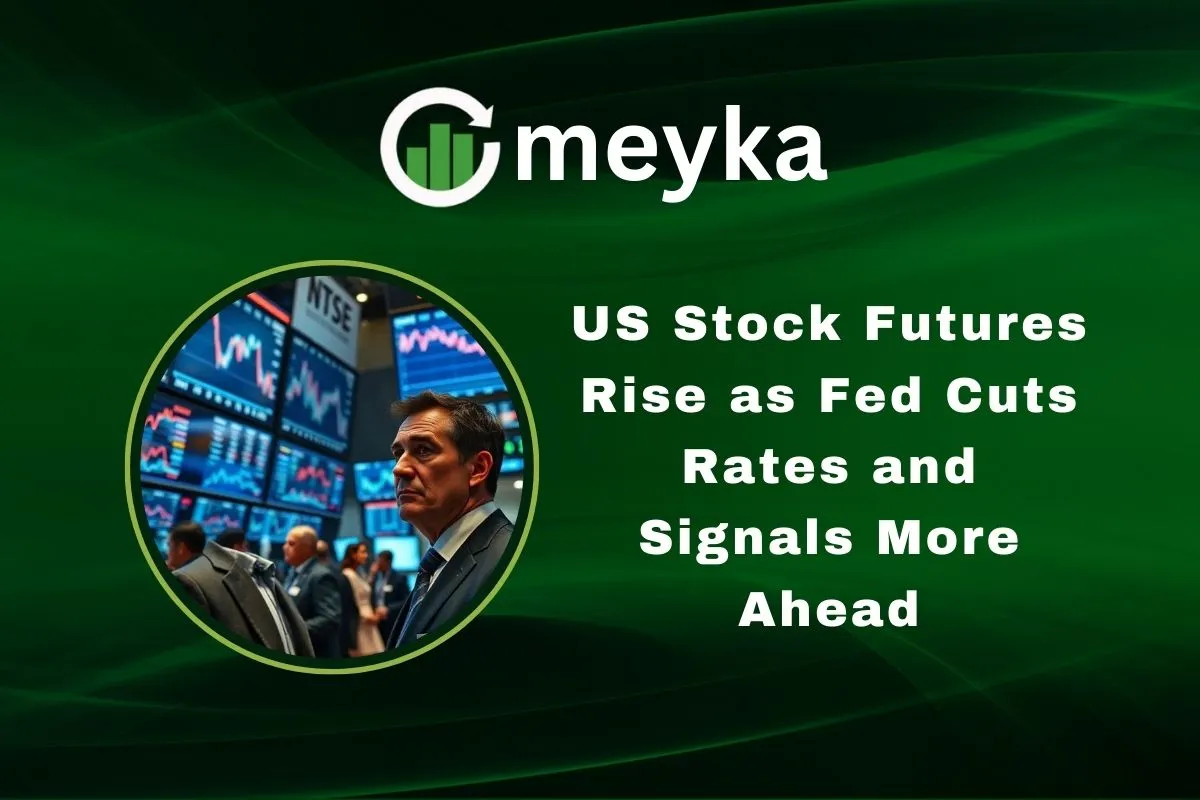US Stock Futures Rise as Fed Cuts Rates and Signals More Ahead
On September 17, 2025, the U.S. Federal Reserve made a significant move by cutting interest rates for the first time this year. The central bank lowered the federal funds rate by 25 basis points, bringing it to a range of 4.00% to 4.25%. This decision came amid signs of a weakening labor market, with unemployment rising to 4.3%, the highest level since 2021.
Following the Fed’s announcement, U.S. stock futures experienced a notable uptick. The Dow Jones Industrial Average futures rose by 0.6%, while the S&P 500 and Nasdaq futures also saw gains, reflecting investor optimism. This rally indicates that investors are hopeful about the Fed’s actions to stimulate economic growth.
However, the Fed’s decision was not without controversy. Fed Chair Jerome Powell emphasized concerns about inflation, which had risen to 2.9% in August, partly due to tariffs. Additionally, newly appointed Fed Governor Stephen Miran dissented, advocating for a more aggressive 50 basis point cut.
We will look at the immediate market reactions to the Fed’s rate cut, discuss the implications of its signals for future rate changes, and examine the broader economic impact of this decision.
Overview of the Fed Rate Cut
The Federal Reserve’s decision to cut interest rates by 25 basis points was aimed at addressing concerns over a slowing economy and rising unemployment. This move marked the first rate cut since December 2024 and brought the federal funds rate to its lowest level since December 2022.
Fed Chair Jerome Powell stated that the decision was a “risk-management cut,” emphasizing the need to support the labor market amid signs of weakness. The Fed’s projections indicate that two more quarter-point cuts are expected by the end of 2025, bringing the target range to 3.5%–3.75%.
The decision was supported by 11 of the 12 voting members of the Federal Open Market Committee (FOMC). However, newly appointed Governor Stephen Miran dissented, advocating for a more aggressive 50 basis point cut.
Immediate Reaction of US Stock Futures
Following the Fed’s announcement, U.S. stock futures experienced a notable uptick. Dow Jones Industrial Average futures rose by 0.6%, S&P 500 futures gained 0.5%, and Nasdaq 100 futures increased by 0.7%. This rally indicates that investors are optimistic about the Fed’s actions to stimulate economic growth.
The positive market reaction was driven by expectations that lower interest rates would reduce borrowing costs for businesses and consumers, potentially boosting spending and investment. Additionally, the prospect of further rate cuts later in the year added to investor confidence.
However, the rally was not uniform across all sectors. Technology stocks, which had been leading the market in recent months, experienced mixed performance. NviNVIDIA’sock dropped 2.7% after reports that China directed major companies to stop purchasing its AI chips. In contrast, American Express rose 2.7% after breaking out above key buy points, and Meta CEO Mark Zuckerberg introduced new AI-powered smart glasses at the Meta Connect developers conference, despite some glitches.
Implications of the Fed’s Signal for Future Rate Cuts
The Fed’s forward guidance indicates that further rate cuts are likely in the near future. The central bank’s projections suggest that the federal funds rate could reach 3.5%–3.75% by the end of 2025, with two more quarter-point cuts expected.
This dovish stance reflects the Fed’s focus on supporting the labor market amid signs of weakness. The central bank’s decision to prioritize employment over inflation concerns suggests that it is willing to tolerate slightly higher inflation in the short term to prevent a further slowdown in economic activity.
For investors, the prospect of lower interest rates could make equities more attractive relative to fixed-income investments. Sectors that are sensitive to interest rates, such as housing and consumer discretionary, may benefit from lower borrowing costs.
Broader Economic Impact
The Fed’s decision to cut interest rates is expected to have several broader economic implications. Lower borrowing costs could stimulate consumer spending and business investment, potentially supporting economic growth. Additionally, the prospect of further rate cuts may boost investor confidence and support higher asset prices.
However, the Fed’s decision also carries risks. While lower interest rates can stimulate economic activity, they can also contribute to higher inflation if demand outpaces supply. The central bank’s projections indicate that inflation is expected to remain above its 2% target in the near term, partly due to tariffs imposed by President Donald Trump.
Furthermore, the Fed’s actions could influence the value of the U.S. dollar. A weaker dollar could make U.S. exports more competitive but could also lead to higher import prices, contributing to inflationary pressures.
Conclusion
The Federal Reserve’s decision to cut interest rates and signal further easing reflects its focus on supporting the labor market amid signs of weakness. While the immediate market reaction has been positive, the broader economic implications remain uncertain. Investors will need to monitor future economic data and Fed communications to assess the potential impacts on the economy and financial markets.
Disclaimer:
This content is for informational purposes only and is not financial advice. Always conduct your research.






